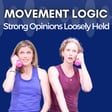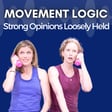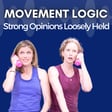
103: Do Weighted Vests Do Anything For Us?
In this episode of the Movement Logic Podcast, Dr. Sarah Court, PT, delves into the trend of walking with weighted vests to improve bone density, especially among perimenopausal and menopausal women.
She reviews multiple long-term and short-term studies on the subject, comparing the effectiveness of weighted vests in bone metabolism, bone mineral density, and balance improvement. Sarah argues that while weighted vests do not significantly impact bone density for most people, they could be beneficial for balance and cardiovascular endurance, especially for the deconditioned or frail.
She also discusses the importance of proper exercise regimens like progressive overload and impact training for bone growth. The episode concludes with practical advice on when a weighted vest might be suitable.
00:43 The Weighted Vest Trend in Menopause Marketing
02:38 Debunking the Myths: Evidence on Weighted Vests
06:10 Research Study: Long-term Exercise with Weighted Vests
13:08 Research Study: Walking Exercise with and without Weighted Vests
17:48 Research Study: Short-term Aerobic Exercise with Weighted Vests
23:45 Conclusion: The Real Benefits of Weighted Vests
28:51 Final Thoughts
Sign up for our Bone Density Mini Course: Barbell 101!
Follow us on Instagram @movementlogictutorials
References:
37 Plyometrics - Get More Bang For Your Bones
38 Got Bones? Yoga Asana Isn't Enough
51 Persistent Myths About Osteoporosis
84 Trick or Truth: 6 Ways to Spot Osteoporosis Misinformation
91 LIFTMOR, Not Less: An Interview With Professor Belinda Beck
96 Bone Density Grifters: Introducing the Grift-O-Meter!
Long-term Exercise Using Weighted Vests Prevents Hip Bone Loss in Postmenopausal Women
Weighted Vest Exercise Improves Indices of Fall Risk in Older Women


